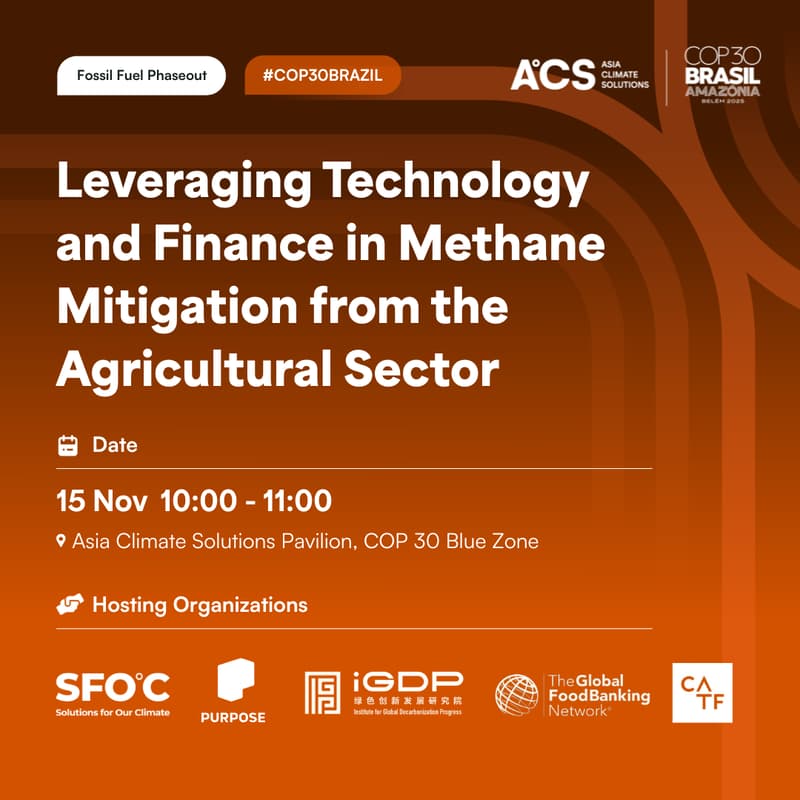

Leveraging Technology and Finance in Methane Mitigation from the Agricultural Sector
Overview
Effective mitigation measures in the agricultural sector are dependent on regional, socio-economic and natural environmental factors. Therefore, best methane mitigation technologies and practices may not be easily applicable, due to scalability, lack of incentives and/or financial instruments.
While the agricultural sector is one of the biggest factors for methane emissions globally, national policies/frameworks often do not cover emission mitigation pathways, thus causing misalignment with global methane mitigation goals. Addressing these policy gaps could incentivize more investment and finance mechanisms for methane abatement.
There are gaps in finance mechanisms and/or incentives to methane mitigation technologies in the agricultural sector. Current financing only covers a small fraction of the sector’s entire emissions, highlighting the need for diversified and innovative funding models to enable widespread adoption of methane mitigation technologies and methods.
Discussion Topics
• In addressing agricultural methane emissions, what are the most promising technological approaches (i.e., improved farming practices, abatement technologies) available with your region of work? What are the challenges and drawbacks to implementing these technologies?
• What are the major regulatory frameworks and/or policies to address emissions abatement in the agricultural sector? Do these policies ensure significant emission reductions in the sector, or what factors must be considered further? Is the national budget adequate to address agricultural methane emissions?
• What financial incentives or instruments currently support agricultural methane mitigation in your region of work? What are the current finance gaps, for example in small-scale farms? How can financial mechanisms be better structured to accelerate methane abatement in the agricultural sector?